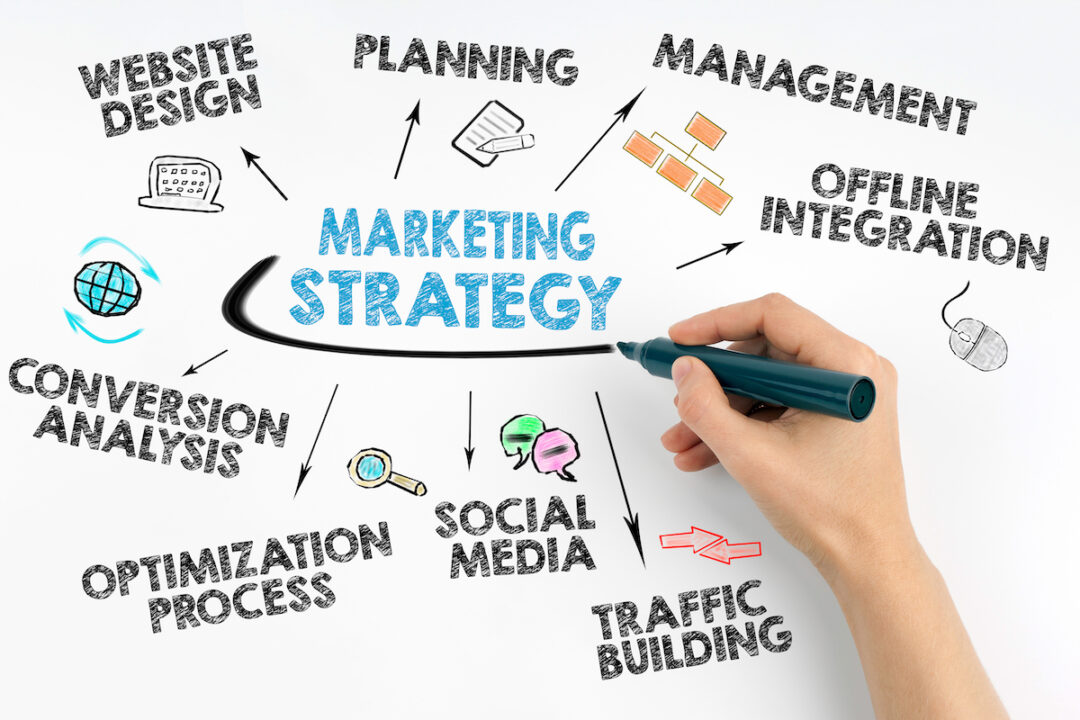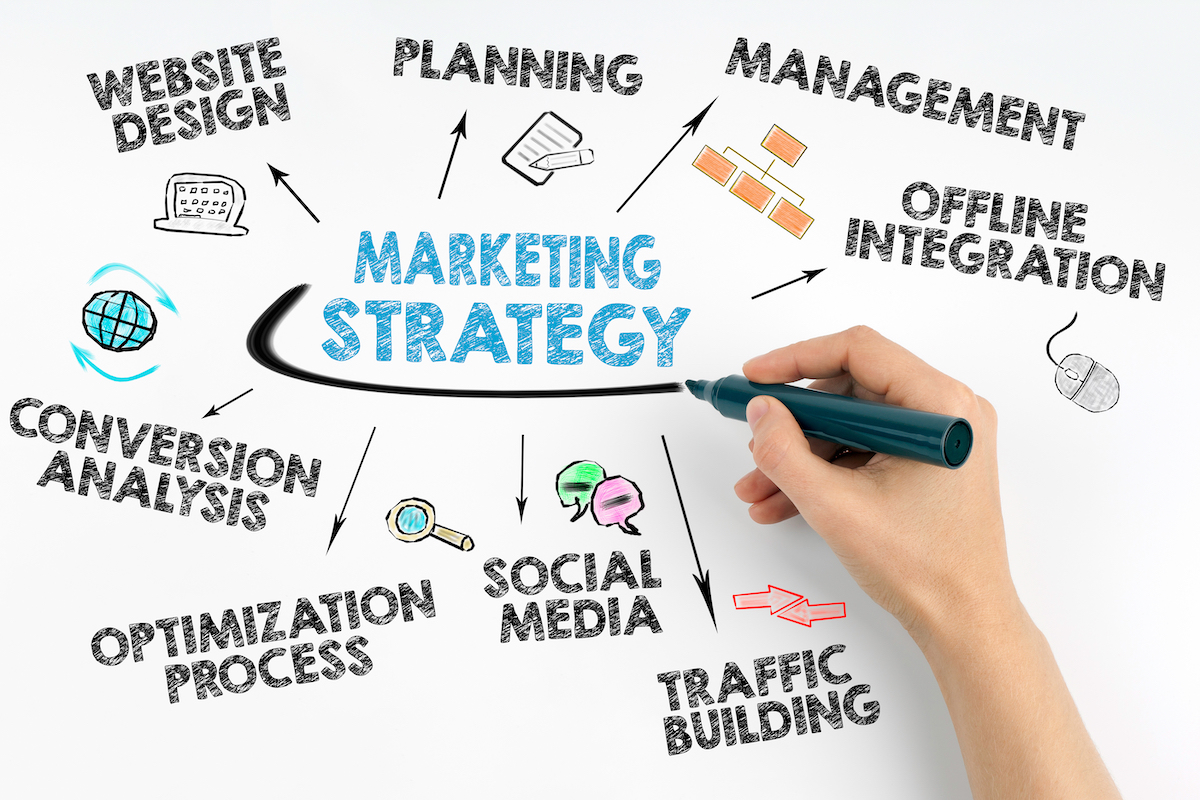Month: January 2022
Fractional Leadership and the Fractional CSO


This blog is part of a series that outlines some high-level considerations and offers insight into the five major types of Fractional Leadership: marketing, sales, operations, finance, and technology.
The information is a consolidation of my personal experience as a Fractional Leader (FL), retaining other FLs in businesses I managed or manage, interviews with FLs on my podcast, Win-Win—An Entrepreneurial Community, and my network and relationships with other FLs.
My experience in operations and being a Fractional Leader in companies running on EOS certainly contribute to my knowledge of operations. I am not, however, a subject matter expert in marketing, sales, finance, or technology. I’ve written these topics with reliance on business owners and FLs in those fields — from a 30,000-foot perspective.
Check out my previous blog discussing the Fractional Chief Marketing Officer (FCMO).
If your marketing is in good (or good enough) shape, what about your sales team? To ensure your sales team capitalizes on the demand created by your marketing, it might be time for you to consider engaging a Fractional Chief Sales Officer (FCSO) to help dial in a high-performance team.
Does Your Sales Strategy Needs Help?
Let’s briefly discuss the several scenarios that trigger the need for an FCSO ( In my book Fractional Leadership, I detail these scenarios as described by Teresa Renaud, an FCSO affiliated with SalesQB.
Scenario 1: you’re personally “half-managing” the sales team. You don’t have a Head of Sales you can trust or rely on, or, because you’re the best at sales, so you’re running the team. I say “half-managing” because you have an entire business to run, not just sales, so your full attention isn’t on it. You don’t have the bandwidth to develop a proven sales process, figure out how to collect and use data to hold the team accountable for actual sales results, and you don’t have the time to teach, manage, and coach the sales team to excellence the way they need. You’re frustrated with the results.
Scenario 2: You hired a sales leader or manager at a lower price point because you can’t afford more or don’t see sales management as hard. You underestimated the skills and experience you need your sales leader to have. Now you have an underperforming sales manager who’s frustrating you and the team. All the salespeople still go to you almost all of the time anyway, they’re frustrated, and the sales manager is one more person you have to manage. He isn’t saving you any time.
Scenario 3: You decided to take your best salesperson and make them the sales manager or team leader. They either take a passive role, simply answering other salespeople’s questions, leaving them with essentially no manager at all. Or they try to live up to that role but aren’t good at managing people, creating systems and processes, collecting data, or using that data to hold the team accountable. You’ve now lost your best salesperson, so sales are down, and you still don’t have an effective sales leader for everyone else. It’s the worst of both worlds.
The common denominator in all of these scenarios is recognizing that being a good salesperson is an entirely different skillset from leadership, management of people, and the creation of accountability.
To get past this blockage, you want someone who’s built and led sales teams successfully before. The catch is you think you can’t afford someone with that level of experience full-time.
How Does an FCSO Engagement Work?
A Fractional CSO might be what you need, but how does it work?
Again, I go into more detail in my book, but briefly, depending on the situation in your business, your FCSO will tackle the various elements of a powerful sales team in different orders. These can include:
- Locking down your lead generation process and head up your marketing efforts.
- Ensuring that whatever you’re doing for lead generation gets you leads in your target market and that you have the correct information for them.
- Creating a scoring system to ensure accountability for the quality and the number of leads.
- Drawing on your and your sales team’s experience to clarify and document the right and best way to make sales in your unique organization with your unique customer or client base.
- Determining how best to use technology like a CRM to manage these metrics and create actionable data. Using this data, you’ll find out how many of each type of action you need to get the results you want.
- Taking ownership over building up your sales team when appropriate by driving recruiting, interviewing, hiring, and training to build a team of “A” players.
- Creating corrective action plans with underperforming salespeople and make the difficult decision to let someone go when it becomes apparent that they aren’t going to be able to level up.
This all sounds great. So, what is the next step?
What Type of FCSO Do You Need?
Now it’s time to determine which type of FSCO is best for your business.
Some FCSOs operate as a group under one umbrella — which I call organizational Fractional Leaders (OFLs). You engage with an FCSO firm, and they work with you to find you an experienced FCSO from their firm to serve on your leadership team.
Other business owners engage with solo practitioners or individual, “single shingle” FCSOs. They like the independence and greater simplicity of working with a single individual. If that person has the right experience, this often works very well.
Some independent FCSOs are licensees of an established sales management system. The two main licensing organizations are SalesQB and Sales Xceleration.
Great FCSOs are using all the above models, so you need to ask yourself which resonates more with you. It can be helpful to speak with FCSOs or clients who have used the various models to determine which would be best for you.
Define Deliverables When Hiring an FCSO
If you’ve decided to hire an FCSO, be sure you’ve define the deliverables you expect from your fractional hire before the engagement starts. This includes:
- Discussing your current sales and what you expect them to achieve, and in what time frame;
- Discussing the level of authority you can and are willing to grant the FCSO; and
- Ensuring that the two of you are 100 percent on the same page to avoid misunderstanding, frustration, or disappointment later on.
If your company’s marketing or sales are not your biggest pain points right now, but you’re having pervasive issues with your people, business structure, or processes, your main pain point might be your operations. In my next blog, I’ll discuss how engaging a Fractional Chief Operating Officer (FCOO) or, for companies using the Entrepreneurial Operating System management (EOS) framework, Fractional Integrator, can tighten up your business operations.
Fractional Leadership and the Fractional CMO


This blog series will outline some high-level considerations and offer some insight into the five major types of Fractional Leadership: marketing, sales, operations, finance, and technology.
The information is a consolidation of my personal experience as a Fractional Leader (FL), retaining other FLs in businesses I managed or manage, interviews with FLs on my podcast, Win-Win—An Entrepreneurial Community, and my network and relationships with other FLs.
My experience in operations and being a Fractional Leader in companies running on EOS certainly contribute to my knowledge of operations. I am not, however, a subject matter expert in marketing, sales, finance, or technology. These topics are written in reliance on business owners and FLs in those fields — from a 30,000-foot perspective.
For this blog, we’ll focus on the Fractional Chief Marketing Officer (FCMO).
Know When Your Marketing Strategy Needs Help
If you’re reading this, it’s likely you’re not fully satisfied with the results of your business’s marketing strategy. You know there’s room for improvement, and chances are you’ve come to one or more of the below realizations:
- Your marketing efforts are scattershot without a clearly defined story and message geared toward a clearly defined target market that runs through every single thing you do.
- You’re frustrated with the declining results you’re seeing from your sales and marketing and know you need to step up your game, or things will fall apart.
- You’re also frustrated with and know marketing agencies are no longer the answer for your particular problem because they require so much of your or your team’s time to direct and supervise, or perhaps they don’t get what you need.
- Your company has a gross revenue of $5–$50 million. Most of your growth was based on your strength in sales, but you’ve probably never had a marketing leader who has “been there and done that” as a partner with a sales organization and cannot afford one full-time.
So, what is next? You have or can get more tactical, in-the-trenches marketing help internally or through a marketing agency or consultant. But you recognize that you might be throwing away money on this without an FCMO to take over the strategic leadership of these resources.
Do You Need a Marketing Agency, Consultant or an FCMO?
How do you know whether you should engage with a marketing agency or consultant or a Fractional Chief Marketing Officer?
The short answer is that marketing agencies and consultants are generally suitable for short-term, discrete projects like setting up your target market, brand messaging, creatives, a new website, or a rebrand. If you have the capacity and internal leadership to supervise the consultant and then carry out all the follow-through that naturally comes after their project, this may be a good option.
If, however, you lack that internal bandwidth, you may be throwing away a lot of money by hiring a consultant because you’ll lack the focused attention to oversee the engagement while it’s going on, as well as for the follow-up execution afterward. You won’t get the full advantage of what you retained them to do.
Marketing agencies can oversee ongoing pay-per-click, print, email, blog, content marketing, videos, or other kinds of marketing campaigns on an ongoing basis. But who’s leading them? Who’s ensuring that their efforts are part of a cohesive strategy? Do you or does someone on your team know what to look for so that the money you’re spending with them isn’t going to waste? Are they continually iterating and improving? Are the messages they’re putting into the world on your behalf consistent with what your salespeople are saying and communicating? Do they reflect a message that demonstrably gets your clients or customers the way you do?
If you or someone on your team has the experience and capacity to oversee a marketing consultant or agency’s work and can continually ensure its effectiveness and consistency with your business and its clients, then that’s great! Those are likely the best resources for you, especially in your earlier stages of growth.
But if you don’t have the bandwidth to oversee their efforts in a robust way, an FCMO is an excellent and cost-effective resource. They can give you a fast, low-risk way to bring that experience, expertise, and bandwidth in-house to ensure you’re getting the biggest bang for your precious marketing buck.
Be Sure to Ask These 3 Questions When Hiring an FCMO
If you’ve decided that hiring a Fractional Chief Marketing Officer is the best course of action for growing your business, there are specific questions you should be sure to ask when vetting for an FCMO.
- Ask them to tell you about the marketing teams (including external vendors and internal teams) they’ve built or led. You want to find someone who hasn’t just been a solo consultant where they did all the heavy lifting themselves. Even if they did a great job as a solo practitioner, this does not mean they can do it at the CMO level for you if they haven’t successfully done that before.
- Ask if they have been a CMO fractionally before and inquire about that experience. Fractional C-level leadership requires different skills than full-time leadership. Even those FCMOs who have successfully been full-time C-level executives before may not succeed in a fractional engagement.If they seem very tactics-focused, this may be a bit of a red flag. It may indicate that they don’t understand strategic marketing leadership. Most of the great CMOs I’ve met and heard from almost always emphasize the target market, story, and message before they get into specific tactics.
- Probe whether they are on the same page with you regarding the purpose of marketing in your business. Is it purely and only a lead generation tool — performance marketing? Or are you looking to build brand and reputation for the longer-term — brand marketing?This type of distinction will make a huge difference in their focus. If you’re out of sync on what kind of outcomes you’re looking for, then the whole experience will be very frustrating for both of you. Clearly explain what’s important to you without any embarrassment and ask them to explain their point of view or plan on that.
These considerations are just some of what goes into understanding what a Fractional Chief Marketing Officer can do to bring your company to the next level. If your current marketing is in good (or good enough) shape, is your sales team properly capitalizing on the demand created by the marketing team? In our next blog in this series, I’ll discuss how engaging a Fractional Chief Sales Officer (FCSO) can ensure they do just that.
What Is Fractional Leadership and Can It Help Your Business?


As a small business owner, have you reached the point in your journey where you’ve hit a “ceiling,” or what I call the Entrepreneurial Catch-22, in your business growth? A point where you can’t scale without bringing on an experienced C-level leader, but you also can’t afford someone like that until after your business has scaled.
Most entrepreneurs who survive the startup phase experience some variation of this. Don’t worry — there’s a solution: It’s called Fractional Leadership (FL). Working with a fractional leader can help your business break through that ceiling and escape the Entrepreneurial Catch-22.
Fractional Leadership means engaging with an experienced C-level executive who’s already scaled an organization like yours. By hiring a fractional leader and making them a part of your leadership team, you will fast-track your ability to break through the ceilings holding you back for a fraction of what it costs to hire someone like that full-time.
Why do so many founder-led businesses hit the ceiling again and again after passing through the startup phase? I believe it is usually because the people on the founding leadership team have never run a business that size before. And they certainly haven’t led a company as big as they want theirs to become.
The data backs this up. Contrary to the stereotype of entrepreneurs as experienced, savvy serial business starters, about 90 percent of startups are founded by people who never started a business before. If you’re feeling alone, like there’s something wrong with you because you don’t know how to solve the problems your business is facing now, you’re not. You’re just like 90 percent of the other small and midsize business owners out there.
Fractional Leadership Can Work for Any Small Business
My first FL client was a media company that creates ad placements on popular websites. In doing so, the media company gives their clients more revenue than they could get on their own. They grew 25 percent revenue in the first quarter I worked with them.
This was not because I have magical or mystical powers or am an ad tech guru. It was because I’d built a business from smaller than theirs to much bigger before. I knew where the pitfalls were and what challenges they were facing, and I’d already learned what to do through trial and error. I helped them skip past the learning curve.
Because they had me on board, there was no need for them to reinvent the wheel. I helped them gain the focus and discipline they needed to immediately attack some of the low-hanging fruit — the little things that were holding them back. They simply didn’t know how to do it.
Another of my clients was a cybersecurity firm that contracts with federal agencies. Their sales team had been hitting the ceiling for a while, and no matter what they tried, they couldn’t breakthrough. When I suggested they consider a fractional chief security officer (FCSO), the CEO was initially hesitant even though he had already retained me as a Fractional Leader!
I assured him he would get a lot further by trying it out than continuing to bang his head against the wall. So he bit the bullet and interviewed three FCSOs I introduced him to, each with relevant federal contracting experience.
Fast forward three months later. Kristen McGarr of Adroit Insights, the FCSO he chose, had embedded herself with the team on the days she spent there. She cost much less than the salary, bonus, benefits, and taxes they would have paid hiring someone full-time, and as a vendor, she started and ramped up in weeks, not months, as a major executive hire would have.
Kristen hit the ground running, learning how things worked and using her past success and knowledge to restructure the sales process. She knew what was important to track, coached the existing team to dramatically increase their closed sales, and hired and trained new team members to position them to grow. They grew more in the first year after retaining her than they had in the previous four.
Outsourcing Customer Service — Fine. But C-Level Leadership?
People know about outsourcing and utilizing freelancers for less-skilled activities like answering phones, data entry, and virtual assistance. In fact, the global outsourcing market for IT alone was $333.7 billion in 2019. But it sounds crazy to think of outsourcing C-level executive Leadership. Right?
But the truth is that Fractional Leadership isn’t as foreign a concept as it initially appears. There are elements of it in the way we have been using attorneys and accountants for decades, if not centuries. We consult with someone about the most sensitive parts of our business and accept their guidance and leadership in our financial, compliance, and legal decision-making even though they aren’t full-time employees and only bill us by the hour.
If your business is hitting the ceiling and you and your leadership team aren’t sure what to do about it but aren’t scaled big enough to bring the experience and expertise you need in-house, full-time, you aren’t the only one.
In the United States alone, the latest data available (2017) from the U.S. Small Business Administration Office of Advocacy shows 5.3 million businesses with 1-19 employees and nearly 6 million with up to 499 employees, with total small firms making up 99 percent of U.S. businesses.
Let me remind you, the vast majority of those business owners have never done this before either. But the fact that you’re reading this blog right now means you’re ready to explore how your business can break through that ceiling and grow!
Visit fractionalleadership.io or contact us today to learn more about how to take your business to the next level.
Are You Increasing Your Prices Enough?


We’ve seen a significant uptick in inflationary pressure across the country, with no signs of it abating. Labor increases are driving all costs up, so now is the time to manage your margins diligently — and to determine if you’re increasing your prices enough.
Gross Margin and Labor Efficiency
Gross profit is revenue less any direct material costs, including subcontracted work. For a construction company, for example, direct material costs would be sticks and bricks as well as subcontractors. The remainder is your gross profit.
I’m a subscriber to Greg Crabtree’s Simple Numbers concept, which relies heavily on maximizing labor efficiency. Most small- and medium-sized businesses do not track or monitor this number, but it is a simple concept. Direct Labor Efficiency (as opposed to administrative or marketing labor) is your gross profit divided by your total labor costs (including benefits and taxes). For example, if your gross profit for the period is $3MM and your direct labor costs are $1.5MM, your labor efficiency ratio would be 2.0.
A good target for Direct Labor Efficiency is 2.75, but that will vary by industry. Consider benchmarking your numbers against industry averages to start.
Gross Margin is a related metric that is the percentage of your direct materials and direct labor to revenue. For instance, if your revenue for a period was $4MM and your direct materials plus direct labor is $2.5MM, then your Gross Margin Percentage is 37.5%. Although gross margin is important to monitor, normally, you don’t have as much control over your vendor pricing as you do with maximizing your labor. That is why we recommend focusing on maximizing Labor Efficiency.
How to Maximize Labor Efficiency
There are a number of strategies to maximize labor efficiency. However, my experience leans towards involving your operations/production team in solving the problem and incentivizing them based upon the results. Top-down approaches don’t usually work as well as letting people solve the problem themselves.
Give them a clear understanding of the problem they’re trying to solve. In these instances, I recommend breaking the problem down to an as granular level as possible. For instance, don’t simply identify one location that has better labor efficiency than another and say fix it. Go to the shop floor, find the differences, and solve those problems.
Pricing As a Strategy
More than likely, you have some discretion in increasing your prices immediately. Analyze your customers by gross margin and unload the bottom 10-20% of them. Most of the time, you will find that you have large volume customers that aren’t contributing much margin.
Reciprocally, you have the top 10-20% of your customers that will pay you more. Have conversations with them to determine if there are any revenue opportunities (e.g., items/services that are ancillary but you don’t currently offer). Combining those two actions will have a tremendous impact on your gross profit and bottom line.
Should you need help in executing your financial growth, consider outsourcing a fractional CFO to guide your team through the business growth process. Learn more about fractional leadership here.
About the Author
As CEO of Core Group, a profit-first business and financial services firm, and a Forbes Business Council member, Christian Brim and his team help companies grow their business while saving taxes. To learn more, contact Christian on LinkedIn or visit coregroupus.com.
